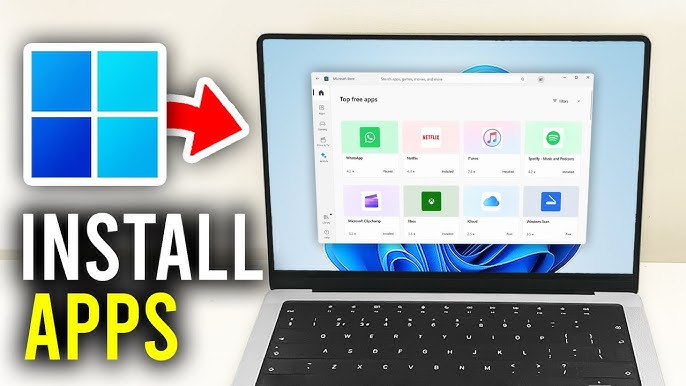Desktop applications remain essential tools for productivity, gaming, and creativity, offering features often unavailable in web browsers. Installing them might seem straightforward, but the process varies across operating systems. This guide walks you through installing desktop apps on Windows, macOS, and Linux, ensuring a smooth experience even for beginners.
1. Preparing to Install
Before downloading any software, take these preparatory steps to avoid issues:
- Check System Requirements: Verify your OS version, processor architecture (e.g., 64-bit vs. 32-bit for Windows, Intel vs. Apple Silicon for macOS), RAM, and storage space. These details are usually listed on the app’s official website.
- Download from Trusted Sources: Always obtain installers from the developer’s website or official stores (e.g., Microsoft Store, Apple App Store). Avoid third-party sites to minimize malware risks.
- Free Up Space: Ensure your device has enough storage. Clear temporary files or uninstall unused apps if needed.
- Backup Data: For critical systems, consider creating a backup or restore point (e.g., using Windows System Restore).
2. Installing on Windows
Windows offers a user-friendly installation process, typically involving executable (.exe) or Microsoft Installer (.msi) files.
Step 1: Download the Installer
- Visit the app’s official website and click the Download for Windows button.
- Choose the correct version (32-bit or 64-bit) if prompted. Check your system type by navigating to Settings > System > About.
Step 2: Run the Installer
- Locate the downloaded file (usually in
Downloads) and double-click it. - If a User Account Control (UAC) prompt appears, click Yes to grant admin privileges.
Step 3: Follow the Installation Wizard
- The setup wizard will guide you through:
- License Agreement: Accept terms to proceed.
- Installation Location: Default is
C:\Program Files\. Change this if needed. - Additional Options: Opt for desktop shortcuts or start menu entries.
- Click Install and wait for completion.
Step 4: Launch the App
- Check the Launch [App Name] box to open it immediately.
- Access it later via the Start menu or desktop shortcut.
Troubleshooting Tips:
- If installation fails, re-download the installer to rule out corruption.
- Disable antivirus software temporarily if it blocks the installer.
- Install missing dependencies like .NET Framework or Visual C++ Redistributable if prompted.
3. Installing on macOS
macOS apps often come as disk images (.dmg) or packages (.pkg). Apps from the App Store install automatically.
Step 1: Download the Installer
- From the developer’s site, select Download for macOS.
- Apps from the App Store can be downloaded directly via the Get button.
Step 2: Open the Disk Image (.dmg)
- Navigate to
Downloadsand double-click the .dmg file. This mounts a virtual disk. - Drag the app icon to the Applications folder shortcut in the window.
Step 3: Handle Security Settings
- If macOS blocks the app (from unidentified developers), go to System Preferences > Security & Privacy.
- Click Open Anyway under the General tab.
Step 4: Launch the App
- Open Finder > Applications and double-click the app. Right-click and select Open if blocked again.
Alternative Method: Using Homebrew
- Install the package manager Homebrew, then run
brew install [app-name]in Terminal.
Troubleshooting Tips:
- Ensure the app supports your macOS version (e.g., Ventura, Monterey).
- For .pkg files, follow on-screen instructions similar to Windows wizards.
4. Installing on Linux
Linux offers multiple installation methods, including package managers, third-party stores, and manual builds.
Method 1: Using Package Managers (Terminal)
- Debian/Ubuntu (APT):
sudo apt update sudo apt install [package-name]
- Fedora (DNF):
sudo dnf install [package-name]
Method 2: GUI Stores
- Use Ubuntu Software or GNOME Software to search and install apps graphically.
Method 3: Install Downloaded .deb or .rpm Files
- .deb (Debian/Ubuntu):
sudo dpkg -i [file-name.deb] sudo apt install -f # Fix dependencies
- .rpm (Fedora):
sudo rpm -i [file-name.rpm]
Method 4: Snap/Flatpak (Universal Packages)
- Enable Snap or Flatpak support, then install via:
sudo snap install [app-name] # Snap flatpak install [app-name] # Flatpak
Method 5: Compile from Source (Advanced)
- Extract the source code, then run:
./configure make sudo make install
Troubleshooting Tips:
- Resolve dependency errors using
apt install -fordnf build-dep. - Use
chmod +x [file]to grant executable permissions.
5. Troubleshooting Common Issues
- Installation Errors: Reboot your device and retry. Check logs (e.g., Windows Event Viewer).
- Missing Permissions: Run installers as administrator (Windows) or with
sudo(Linux). - Compatibility Issues: Use compatibility mode (Windows) or virtualization tools like Wine for running Windows apps on Linux/macOS.
6. Uninstalling Desktop Apps
- Windows: Use Settings > Apps > Installed Apps or Control Panel.
- macOS: Drag the app from Applications to Trash, or use apps like AppCleaner.
- Linux: Use
sudo apt remove [package]or GUI stores.
Conclusion
Installing desktop apps varies by OS, but following these steps ensures a hassle-free experience. Always prioritize security by downloading from trusted sources and keeping software updated. Whether you’re setting up a productivity tool on Windows, a design app on macOS, or an open-source utility on Linux, this guide empowers you to install with confidence. Happy computing!
